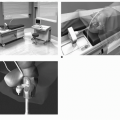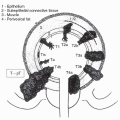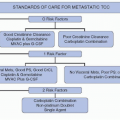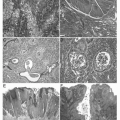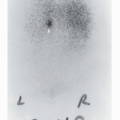Chemotherapy for Penile Cancer
Lance C. Pagliaro
SINGLE-AGENT CHEMOTHERAPY
The first candidate drugs for the treatment of penile carcinoma were identified on the basis of their antitumor activity in squamous cell carcinomas arising in other sites. Responses to single-agent bleomycin were reported in 1969 (1) and to methotrexate, in 1972 (2). Cisplatin and cisplatin-based combinations were studied in the 1980s (3). In a multicenter study conducted by the Southwest Oncology Group (SWOG), 26 patients with metastatic penile cancer received single-agent cisplatin at a dosage of 50 mg/m2 on days 1 and 8 of each 28-day cycle (4). Only four patients (15%) experienced responses that persisted for 1 to 3 months. Responses to bleomycin, methotrexate, and cisplatin treatment given sequentially suggested noncross-resistance to these drugs (3).
COMBINATION CHEMOTHERAPY REGIMENS
The combination of bleomycin, methotrexate, and cisplatin was studied in metastatic penile cancer. In a single-institution phase II study conducted at M. D. Anderson Cancer Center (5), 30 patients with squamous cell carcinoma of the urinary tract, including 21 men with metastatic penile cancer, received bleomycin at a dosage of 50 mg/m2 on days 2 to 6, cisplatin at 20 mg/m2 on days 2 to 6, and methotrexate at 200 mg/m2 with leucovorin rescue on days 1, 15, and 22 of each 28-day cycle. There were 12 responses (55%) in the group with penile carcinoma, and the median duration of response was 4.7 months for the entire study. A second phase II study was conducted by SWOG, in which patients received bleomycin at a dosage of 10 U/m2 on days 1 and 8, methotrexate at 25 mg/m2 on days 1 and 8, and cisplatin 75 mg/m2 on day 1 of each 21-day cycle (6). Among 40 evaluable patients, there were 5 complete and 8 partial responses for an overall response rate of 32.5%, which exceeded the predetermined target rate of 30%. The median response duration was 16 weeks, and the estimated median survival time was 28 weeks. The toxicity of the regimen was considerable, however, with five treatment-related deaths. Nine additional patients withdrew from treatment because of toxicity. The most common toxic effects were gastrointestinal and hematologic, and the treatment-related deaths were due to bleomycin lung toxicity, other pulmonary causes, and infection.
The use of bleomycin in the treatment of men with penile cancer was associated with an unacceptable level of toxicity. Bleomycin is associated with potentially fatal pulmonary toxicity, for which there is a greater risk in patients older than 50 years (7). The median age of men with penile cancer is 55 to 58 years, so bleomycin is a poor choice of drug for this group. Single-agent methotrexate had a 61.5% response rate in a small series (3 ) but was also associated with life-threatening toxicity, and the high response rate was never confirmed or supported by the results of combination regimens that contained methotrexate (6).
Other cisplatin-based combinations have demonstrated response rates of 25% to 50% (Table 49.1) (8,9,10,11). In this context, a regimen would be of interest if it has an overall response rate >30% with acceptable toxicity. The study of irinotecan and cisplatin (11) conducted by the European Organisation for Research and Treatment of Cancer was a prospective study with 26 evaluable patients but was interpreted as a negative result by the authors, because the response rate of 30.8% had an 80% confidence interval (18.8%-45.1%) extending well below 30%.
The study of paclitaxel, ifosfamide, and cisplatin (10) was a neoadjuvant study, as discussed below, in which all patients had stage IIIb or IV penile cancer, but with metastases limited to the inguinal and pelvic lymph nodes. The other phase II studies listed in Table 49.1 included patients with distant metastases, and this difference in patient eligibility may account for some of the improved outcome. Nevertheless, the response rate of 50% and safety profile of paclitaxel, ifosfamide, and cisplatin compare favorably to the historical experience with other drug combinations, particularly those containing bleomycin. Further study of taxanes for the treatment of metastatic penile cancer is warranted, and a prospective study of docetaxel, fluorouracil, and cisplatin is currently ongoing in Europe (Table 49.2) (12,13).
MULTIMODALITY THERAPY
Neoadjuvant Chemotherapy
The 5-year overall and disease-free survival rates with surgery alone are as high as 80% for unilateral, superficial inguinal lymph node involvement with no more than two nodes (stage N1 or limited N2), only 10% to 20% for stages N2 and N3 (multiple, bilateral, or pelvic lymph nodes involved), and <10% in the presence of extranodal extension (14,15,16). Most recurrences are detected within 2 years of surgery. An aggressive multimodal
approach to the treatment of high-risk patients with regional lymph node involvement could result in better overall survival.
approach to the treatment of high-risk patients with regional lymph node involvement could result in better overall survival.
TABLE 49.1 PROSPECTIVE SERIES WITH CISPLATIN AND COMBINATIONS CONTAINING CISPLATIN | ||||||||||||||||||||||||||||
|---|---|---|---|---|---|---|---|---|---|---|---|---|---|---|---|---|---|---|---|---|---|---|---|---|---|---|---|---|
| ||||||||||||||||||||||||||||
Stay updated, free articles. Join our Telegram channel

Full access? Get Clinical Tree


